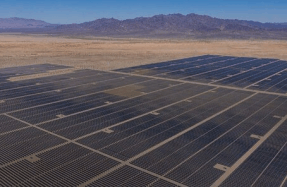
IN 2000, Sam Lea converted his once-productive Willamette Valley onion field back into wetlands. The third-generation Oregon farmer excavated several ponds and largely left the land alone. Soon, willows arrived on the wind. Then tule appeared. About five years ago, he noticed wapato had sprouted. The edible tuber, a traditional food for Pacific Northwest Indigenous peoples, is now flourishing. The greenery covers 70 acres. “If you look at it now, you’d think we planted it all,” Lea said.
Wapato was once abundant but hasn’t grown here since the early 1900s, when Lake Labish, a shallow body of water 10 miles long and north of Salem, was drained for farming. Historic accounts describe Molalla people gathering tubers in the area. “There’s a significant seed bank in the soil,” said David G. Lewis (Confederated Tribes of Grand Ronde), an Oregon State University anthropology and Indigenous studies assistant professor who descends from western Oregon’s Takelma, Chinook, Molalla and Santiam Kalapuya peoples. “If you leave it alone, (plants) will come back.”
At Lake Labish, cattails, tule, willows and wapato grew over thousands of years. Farmers erased evidence of the lake above ground, but belowground, decomposed vegetation that extends some 19 feet back in time preserved seeds and roots, retaining both ecological memory and a possible future.
Lea assumed that swans or geese spread the wapato seeds. But water collected in the ponds he made could have reawakened long-buried tubers, souvenirs of plants that lived before the lake was drained. At other Northwestern agricultural sites, native plants have also returned, unseeded, once crops or invasive plants were removed. In an era of ecological dread, endless development and rising global temperatures, it’s hard to believe that plants could endure, and even regrow.
Many plants store future generations just a few inches belowground in seed banks, where seeds, roots, buds and bulbs remain dormant. Some seeds can survive for decades — even centuries, or longer. Seed banks are “biodiversity reservoirs,” as one recent study described and are found in ecosystems globally. Across the West, they’re present from wetlands to deserts, sand dunes and sagebrush steppes. The plants wait until conditions are just right to reappear.
To Native scientists like Lewis, they offer a new possibility, that despite generations of degradation, some landscapes can come back. Northwest plants evolved unique seed structures, hardy root systems, long-living bulbs and complex dormancy periods to survive in landscapes that faced regular disturbance by everything from volcanic eruptions to flooding, drought, fire and colonialism. Yet non-Native scientists often overlook their ability to regrow — natural regeneration. It’s a tool in restoration ecology that is both understudied and written off even though it’s cheaper — and better —at creating resilient biodiverse landscapes.
“A large part of the urge to plant is this feeling, like, ‘We broke it. We need to fix it,’” said Robin Chazdon, a senior fellow at the nonprofit research organization World Resources Institute. Chazdon, who is based in Boulder, Colorado, co-authored a 2017 policy brief that urged ecologists and others to consider natural regeneration. For 30 years, she has studied forests in Mexico, Costa Rica and Brazil. Tropical forests, including mangroves, can regrow better on their own, without any plantings, her research found. “We don’t want to work against nature,” she said. “We want to work with nature. And nature’s figured out over these billions of years how to recover.”
Experts say restoration can be one-size-fits-all: Kill the weeds, then plant native seeds. But it’s hard to get seeds to grow and some might not be genetically adapted to the site. Collecting and planting native seeds is the foundation of the Department of the Interior’s new National Seed Strategy Keystone Initiative, which Secretary Deb Haaland (Pueblo of Laguna) said will “help ensure we get the right seeds, in the right place, at the right time to restore our public lands and bolster climate resilience.”
Many non-Native scientists question whether restoration isn’t possible without planting because seed banks are either depleted or can’t replenish damaged landscapes fast enough. There’s an urgency, they say, given the climate and extinction crisis. If native plants return quickly, pollinators, fish, birds and mammals — a functioning ecosystem — might follow.
But this approach is based on the assumption that we can rush ecological processes that have evolved over millennia. It ignores




